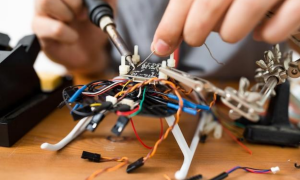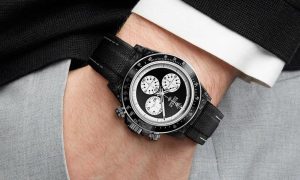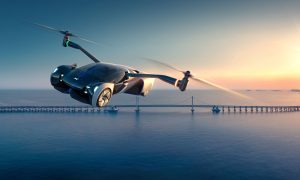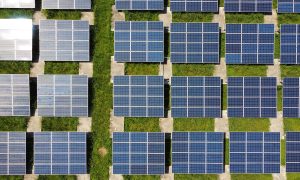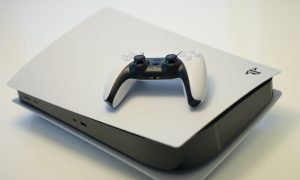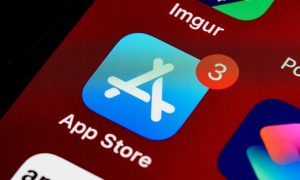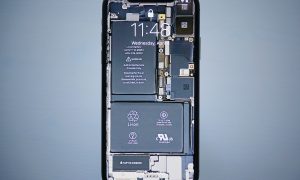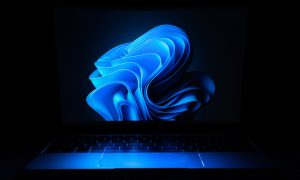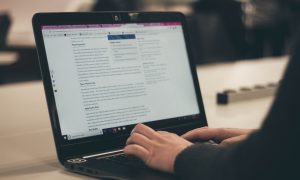“The pen is mightier than the sword” may have been true in 1839, but most writers today have traded their pen for a laptop. What kind of laptop does a writer need? Typically, they don’t need the most powerful model. However, one that’s compact and has a comfortable keyboard is a good start. Next comes the choice of display, and here the writer needs to decide whether his or her priority is portability or screen real estate.
Choosing the best laptop for writing means understanding your preferences and making the right compromises. A larger screen requires a larger, heavier laptop. A more comfortable keyboard will add some thickness. A long-lasting battery means the computer will weigh a bit more.
You need to decide whether to prioritize price or power. A powerful processor and graphics card is nice, but necessary only if you use your laptop for more than writing.
The MacBook Air is almost the perfect tool for a writer, and it’s the one I chose for myself. It’s highly portable and has stellar battery life. That’s because it doesn’t offer any more power than is necessary. The new model now offers a Retina display, and it’s housed in a strong, unibody aluminum shell for maximum durability.
But some writers do need a more powerful computer. For example, if they also work with video, develop games, or want to use their laptop for gaming. In that case, it’s hard to overlook Apple’s MacBook Pro. It’s not cheap but offers plenty of RAM, a fast multi-core processor, discrete graphics, and a terrific display.
For the budget-conscious, many inexpensive laptops are capable writing machines. We include a number of them in our roundup. Of these, the Lenovo Chromebook C330 offers exceptional value. It’s inexpensive, highly portable, and the battery life is fantastic. And because it runs Chrome OS, it is still fast despite its low specs. For those who require Windows and can live with a little less battery life, we recommend the Acer Aspire 5.
They’re not your only options. We narrowed our selection down to twelve high-rated laptops that meet the needs of a wide variety of writers. Read on to discover which is best for you.
What Are the Computing Needs of a Writer?
There are almost as many types of writers as there are models of laptops: bloggers and journalists, fiction writers and scriptwriters, essayists and curriculum writers. The list doesn’t stop with full-time writers. Many office workers and students also spend a good deal of time “writing.”
The values of those purchasing a writing laptop also vary. Some prioritize affordability, while others prefer portability. Some will use their computer for writing only, while others need to perform a wide range of tasks.
What does a writer need from a laptop? Here are some things to keep in mind.
Writing Software
There is a wide range of software tools for writing. Office workers and students typically use Microsoft Word, while full-time writers may employ more specialized tools like Ulysses or Scrivener. We’ve rounded up the best options in these reviews:
- Best Writing Apps for Mac
- Best Screenwriting Software
You may also need to use your laptop for other tasks. Those apps, and their requirements, may be more important when determining the specifications of the computer you need to purchase.
A Laptop Capable of Running Your Software
Most writing software doesn’t require a super-powerful computer. You can minimize those requirements even further by choosing one that runs on a lightweight operating system like Google’s Chrome OS. The Capitalize My Title.com blog lists eight key things to keep in mind when buying a new laptop:
- Storage: 250 GB is a realistic minimum. Get an SSD if you can.
- Graphics: while we suggest a discrete graphics card, it’s not necessary for writing.
- Touchscreen: an optional feature you may find useful if you prefer to handwrite your notes.
- RAM: 4 GB is the minimum you’ll want. 8 GB is preferred.
- Software: Choose your preferred operating system and word processor.
- CPU: choose Intel’s i5 or better.
- Keyboard: a backlit keyboard will help you write in low light, and a full-size keyboard is beneficial. Consider an external keyboard.
- Weight: we recommend a laptop weighing less than 4 lbs (1.8 kg) if you’ll be carrying it around a lot.
Almost all the laptops in this review meet or surpass those recommendations. Most Chromebooks have less-powerful Intel Celeron processors because that’s all they need.
All the laptops listed here include a minimum of 4 GB of RAM, but not all have the preferred 8 GB. Here are the available memory configurations sorted from best to worst:
- Apple MacBook Pro: 8 GB (configurable to 64 GB)
- Apple MacBook Air: 8 GB (configurable to 16 GB)
- Microsoft Surface Laptop 3: 8 or 16 GB
- Microsoft Surface Pro 7: 4GB, 8GB or 16GB
- Asus VivoBook 15: 4 or 8 GB (configurable to 16 GB)
- Lenovo ThinkPad T470S: 8 GB
- Acer Aspire 5: 8 GB
- Lenovo Chromebook C330: 4 GB
- Acer Spin 3: 4 GB
- HP Chromebook 14: 4 GB
- Samsung Chromebook Plus V2: 4 GB
A Comfortable Keyboard
Writers need to type all day without frustration or fatigue. For that, they need a keyboard that’s functional, comfortable, tactile, and accurate. Everyone’s fingers are different, so try to spend time typing on a laptop you’re considering before buying it.
A backlit keyboard can help when you’re working at night or in low-light conditions. Five of the laptops in this roundup feature backlit keyboards:
- Apple MacBook Air
- Apple MacBook Pro
- Lenovo ThinkPad T470S
- Acer Aspire 5
- Asus VivoBook 15 (optional)
Not all writers need a numeric keypad, but if you prefer one, your two options in our roundup are the Acer Aspire 5 and Asus VivoBook 15.
Consider using an external keyboard when typing from your desk. Many choose a keyboard with solid ergonomics, but mechanical keyboards are also popular. We made some recommendations in the “Other Gear” section of this review.
An Easy-to-Read Display
A tiny display is preferable if you want maximum portability, but it may also compromise your productivity. A larger screen is better in almost every other way. They are less likely to cause eye-strain and, according to tests conducted by Microsoft, can increase your productivity by 9%.
Here are the sizes of the displays that come with each laptop in our roundup. They are sorted from smallest to largest, and I’ve bolded models with a significantly denser pixel count.
Highly portable:
- Apple iPad Pro: 11-inch (2388 x 1668)
- Lenovo Chromebook C330: 11.6-inch (1366×768)
- Samsung Chromebook Plus V2: 12.2-inch (1920 x 1200)
- Microsoft Surface Pro 7: 12.3-inch (2736 x 1824)
Portable:
- Apple MacBook Air: 13.3-inch (2560 x 1600)
- Apple MacBook Pro 13-inch: 13.3-inch (2560 x 1600)
- Microsoft Surface Laptop 3: 13.5-inch (2256 x 1504)
- Lenovo ThinkPad T470S: 14-inch (1920×1080)
- HP Chromebook 14: 14-inch (1920 x 1080)
Less portable:
- Microsoft Surface Laptop 3: 15-inch (2496 x 1664)
- Acer Spin 3: 15.6-inch (1366 x 768)
- Acer Aspire 5: 15.6-inch (1920 x 1080)
- Asus VivoBook 15: 15.6-inch (1920×1080)
- Apple MacBook Pro 16-inch: 16-inch (3072 x 1920)
If you work from your desk regularly, you might like to have an external monitor for your laptop. I’ve linked some recommendations in “Other Gear” below.
Portability
Portability isn’t crucial, but it’s something many of us value. Make it a priority if you carry your laptop with you everywhere, or spend time working out of the office.
If portability your thing, look for a laptop with thin bezels around the screen and a compact keyboard. In addition, prioritize an SSD over a spinning hard drive—they are much less prone to damage from on-the-go bumps and drops.
Here are our recommended laptops sorted by weight. The first two are tablets, and the rest are laptops. The final group of laptops didn’t make the cut in terms of portability.
Incredibly light:
- Apple iPad Pro: 1.03 lb (468 g)
- Microsoft Surface Pro 7: 1.70 lb (775 g)
Light:
- Lenovo Chromebook C330: 2.65 lb (1.2 kg)
- Apple MacBook Air: 2.7 lb (1.25 kg)
- Lenovo ThinkPad T470S: 2.91 lb (1.32 kg)
- Samsung Chromebook Plus V2: 2.98 lb (1.35 kg)
- Apple MacBook Pro 13-inch: 3.02 lb (1.37 kg)
- Microsoft Surface Laptop 3: 3.4 lb (1.542 kg)
Not so light:
- HP Chromebook 14: 4.2 lb (1.9 kg)
- Asus VivoBook 15: 4.3 lb (1.95 kg)
- Apple MacBook Pro 16-inch: 4.3 lb (2.0 kg)
- Acer Aspire 5: 4.85 lb (2.2 kg)
- Acer Spin 3: 5.1 lb (2.30 kg)
Long Battery Life
Being able to write without worrying about battery life is freeing. Once inspiration strikes, you don’t know how many hours you might spend writing. Your battery needs to last longer than your inspiration.
Fortunately, writers tend not to tax their computer’s components excessively, and should get the higher-end amount of battery life the machine is capable of. Here is the maximum battery life for each laptop in this roundup:
Battery Life More than 10 hours:
- Apple MacBook Air: 12 hours
- Microsoft Surface Laptop 3: 11.5 hours
- Apple MacBook Pro 16-inch: 11 hours
- Microsoft Surface Pro 7: 10.5 hours
- Lenovo ThinkPad T470S: 10.5 hours
Battery Life 9-10 hours:
- Apple MacBook Pro 13-inch: 10 hours
- Apple iPad Pro: 10 hours
- Lenovo Chromebook C330: 10 hours
- Samsung Chromebook Plus V2: 10 hours
- HP Chromebook 14: 9.5 hours
- Acer Spin 3: 9 hours
Battery Life Less than 9 hours:
- Acer Aspire 5: 7 hours,
- Asus VivoBook 15: 7 hours.
Conclusion
You may choose to carry a few peripherals with you as you work outside of the office. However, peripherals really shine when you get back to your desk. These include keyboards and mice, external monitors, and external hard drives. We make some recommendations in the “Other Gear” section below.
Because of limited space, most laptops come up short on USB ports. You’re likely to need a USB hub to make up for this.






